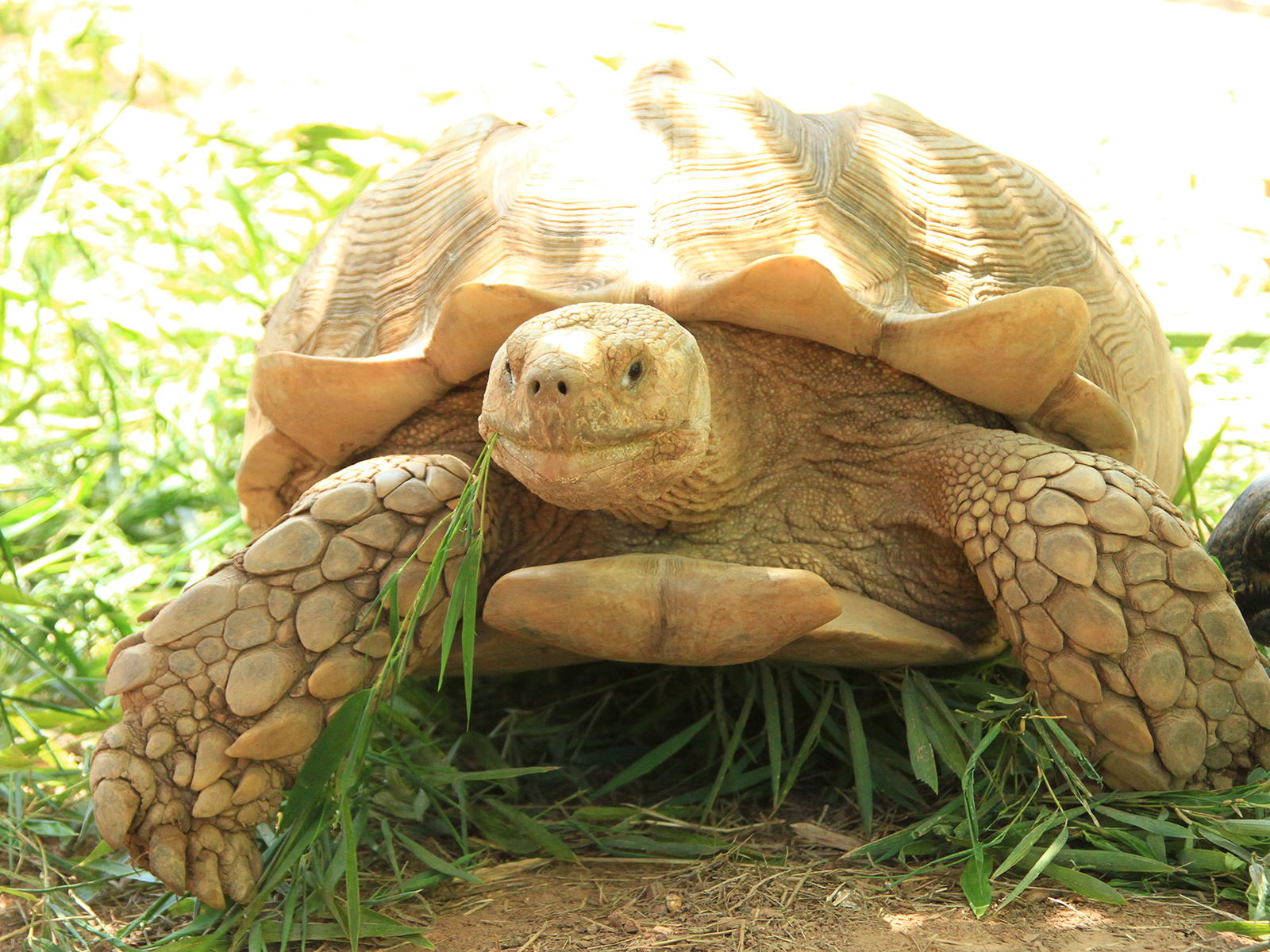African Spurred Tortoise
Centrochelys sulcata
Class
Reptilia
Order
Testudines
Family
Testudinidae
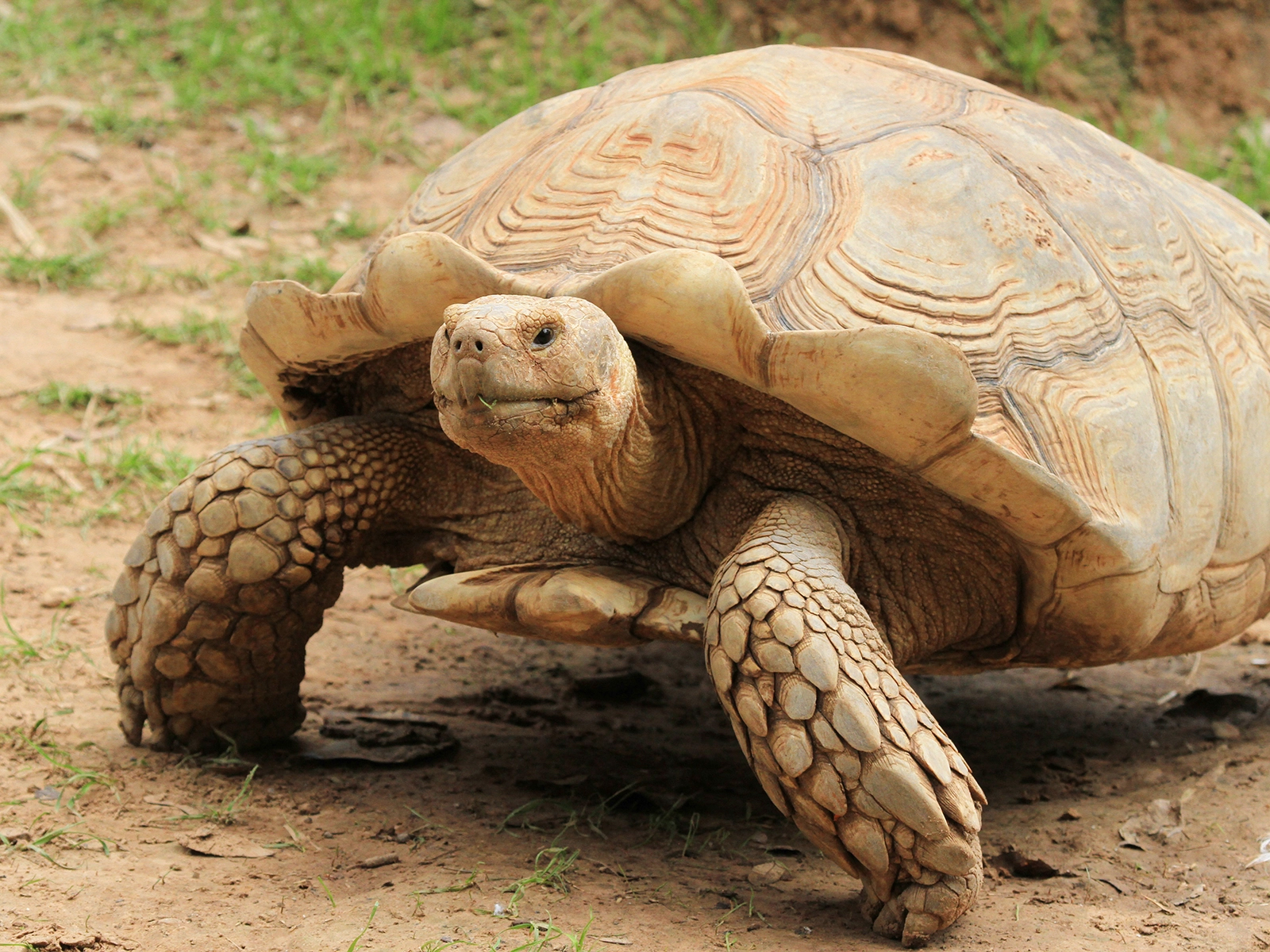
Reptilia
Testudines
Testudinidae
Southern edge of the Sahara Desert in Africa
Length: Males avg. 30 in, Females avg. 20 in
Weight: Males up to 200 lbs, Females up to 90 lbs
Semi-arid grasslands, scrub, and savanna
Clutch: 15 - 30 eggs
Gestation: About 60 days
Grasses, weeds, cactus
Endangered
The African spurred tortoise is the largest mainland tortoise. It is the world's third-largest tortoise overall, after the island dweller tortoises from Aldabra and Galápagos.
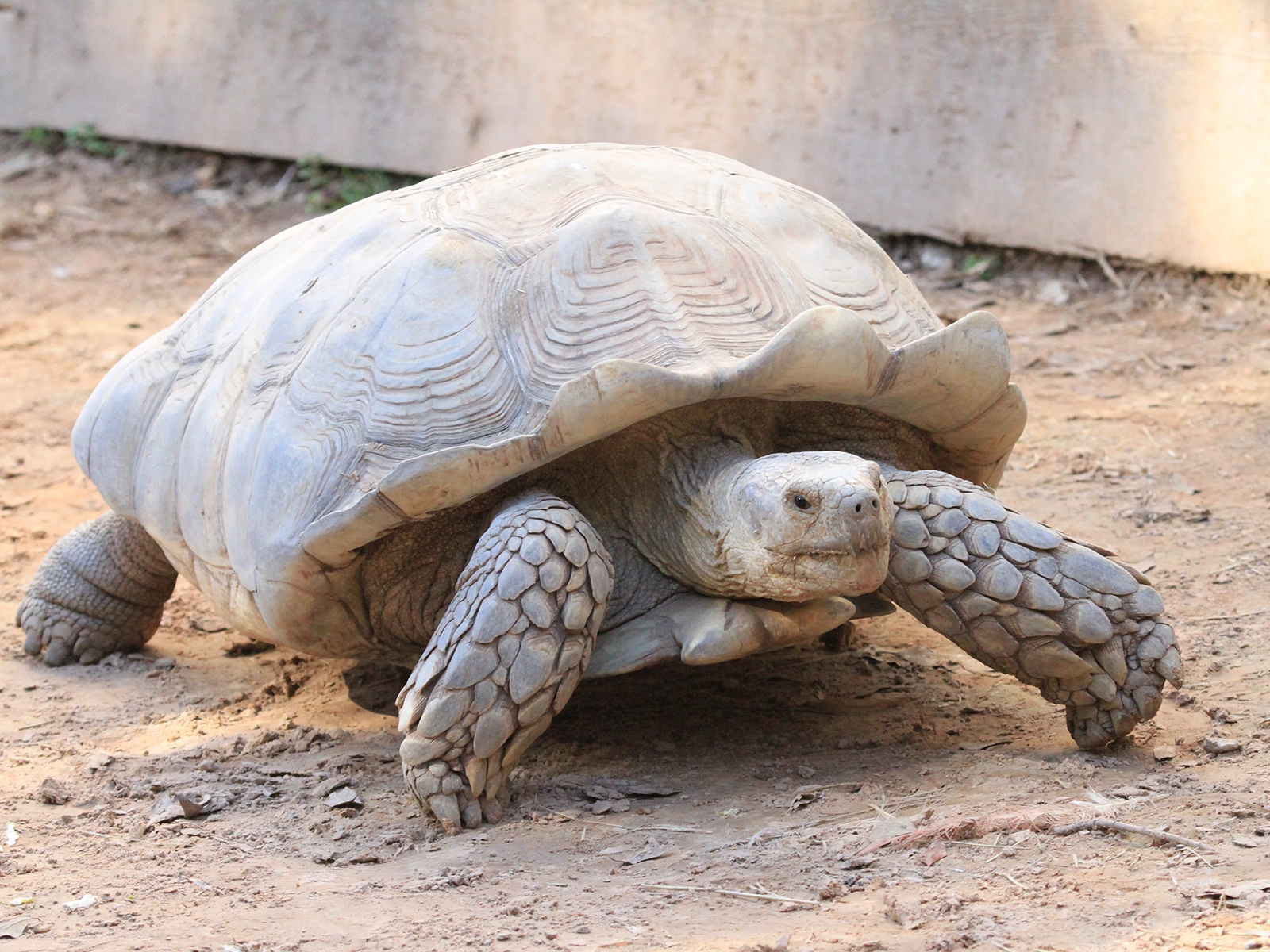
These solitary and territorial reptiles will compete with other tortoises that encroach on their feeding grounds or burrowing areas. Fights consist of ramming shells and trying to flip one another over.
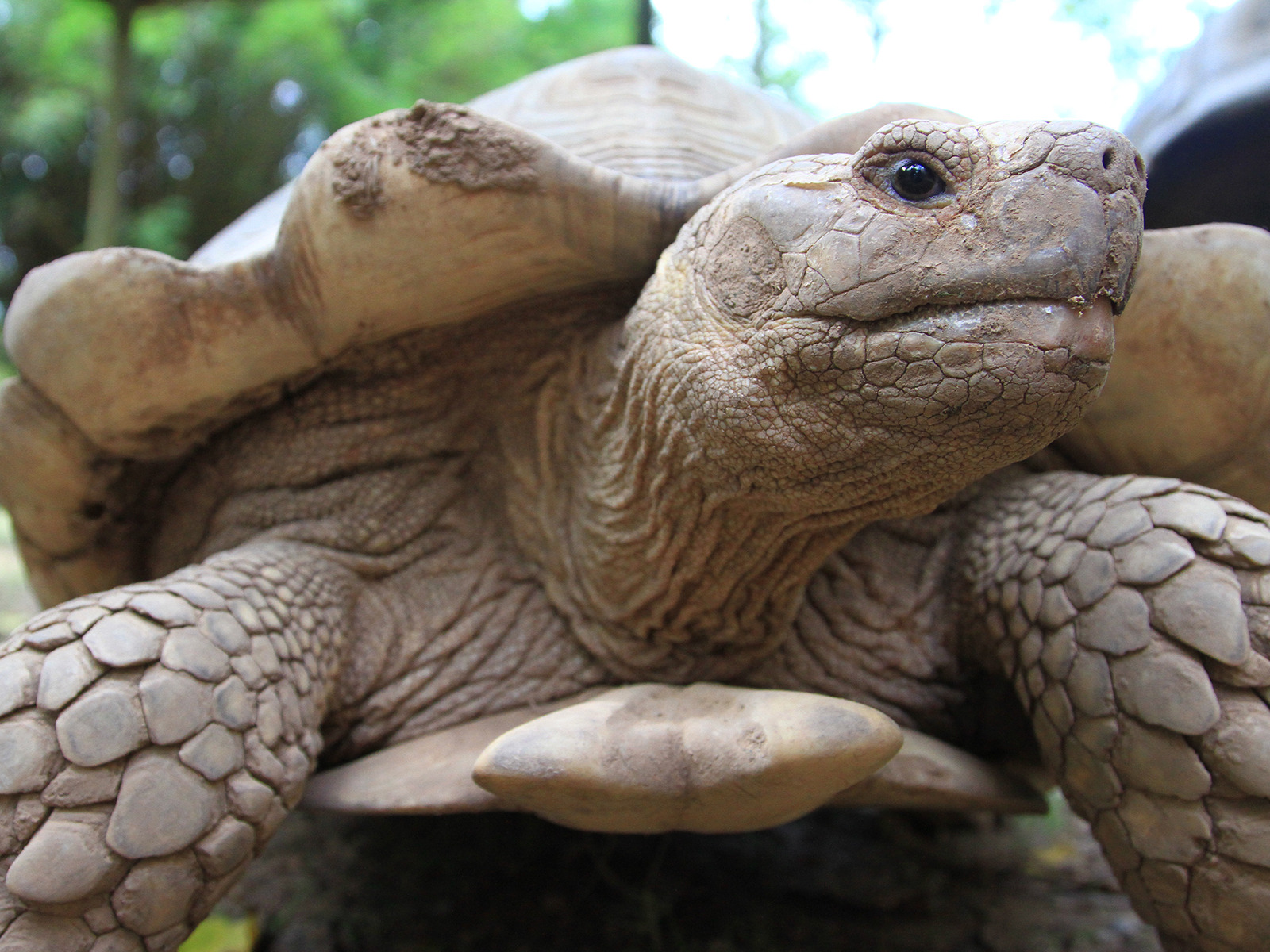
This species is an excellent digger, diggin burrows up to 10 feet deep. Their burrows provide shelter during the dry and rainy seasons. They will dig burrows underground to create a cooler and moister sheltered environment in order to regulate their body temperature in the heat.
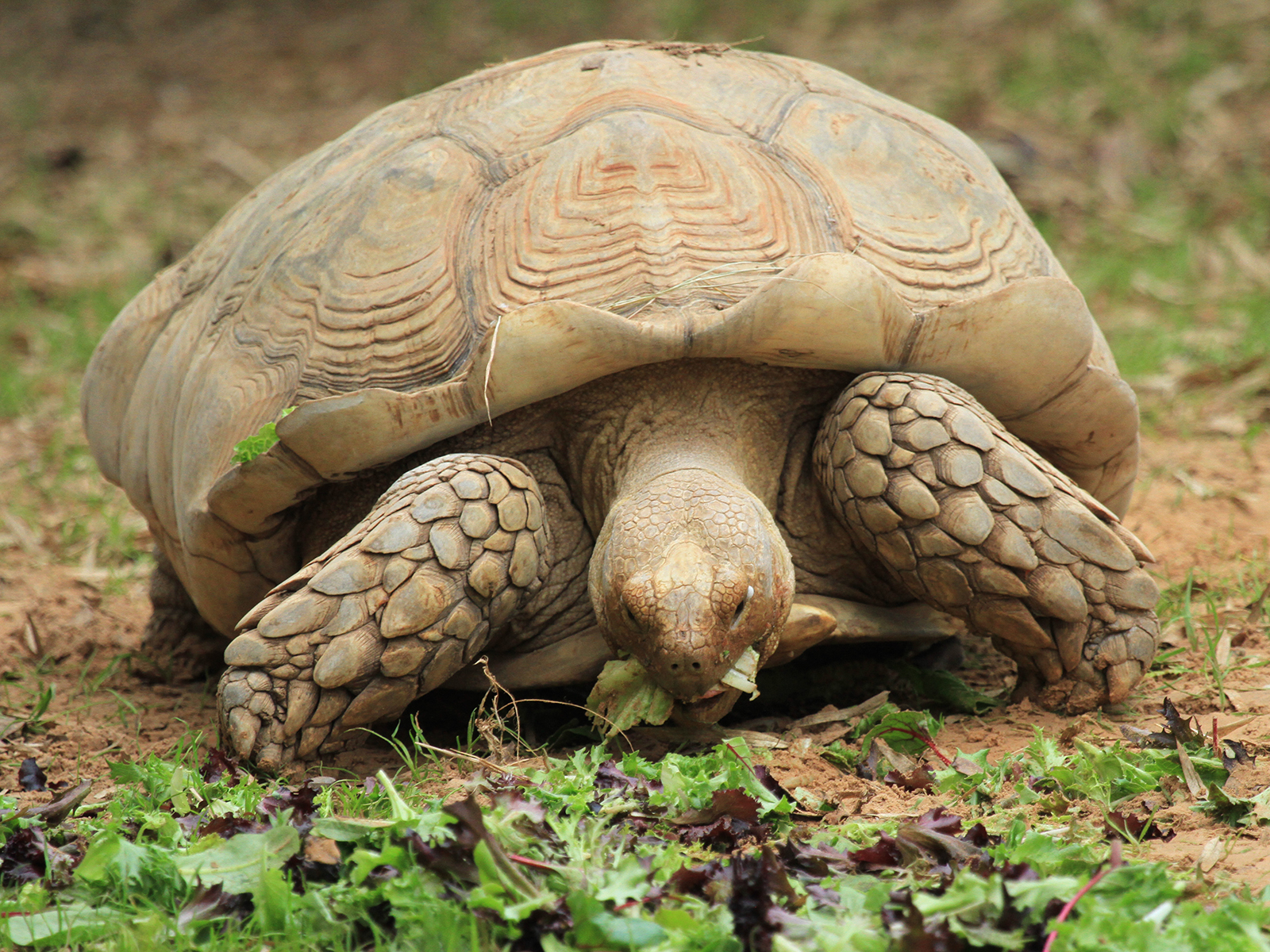
Breeding occurs anytime between June and the following March, though it is thought to be more common after the rains from September to November. Hatchlings are about 2 inches long.
African spurred tortoises are in decline due to habitat loss, desertification, and the illegal pet trade. The ongoing desertification of the Sahel region, combined with high-density livestock grazing (by cattle, goats, donkeys, and camels), destroys the tortoise's natural habitat and restricts their presence. Overgrazing and bushfires reduce food plants and fragment their environment.
Share Information: Educate friends, family, and social media contacts about the tortoise's endangered status and the impact of habitat loss and unsustainable pet ownership.
Turbo Hatched June 2004
Dozer Hatched January 2000
